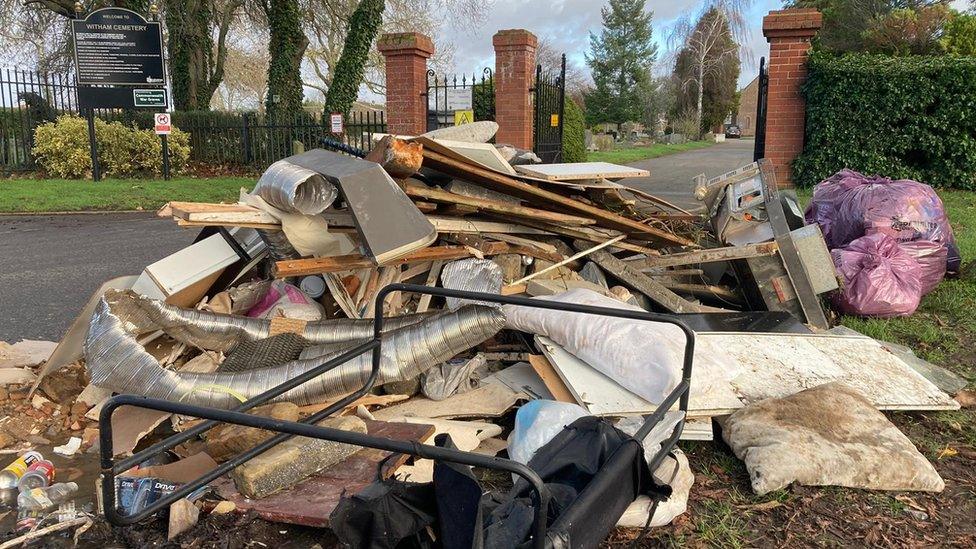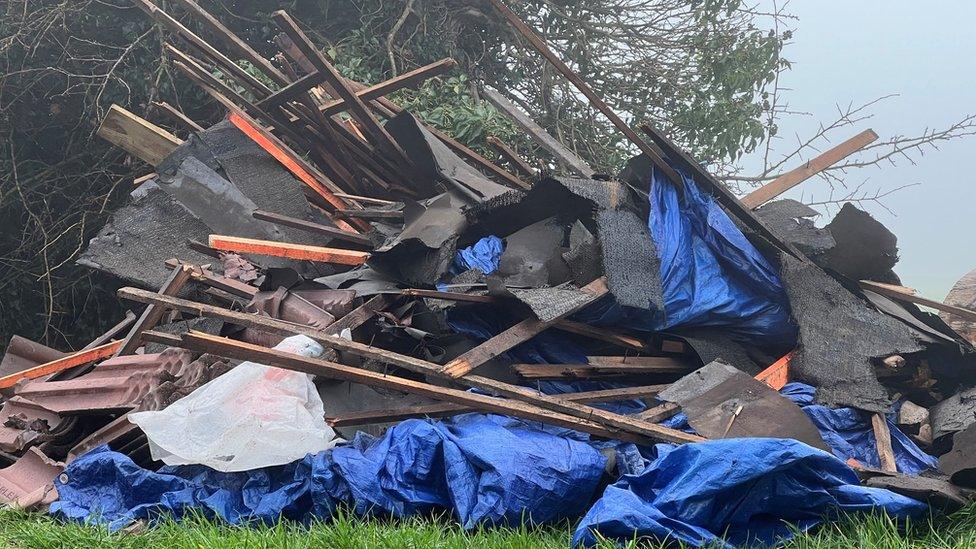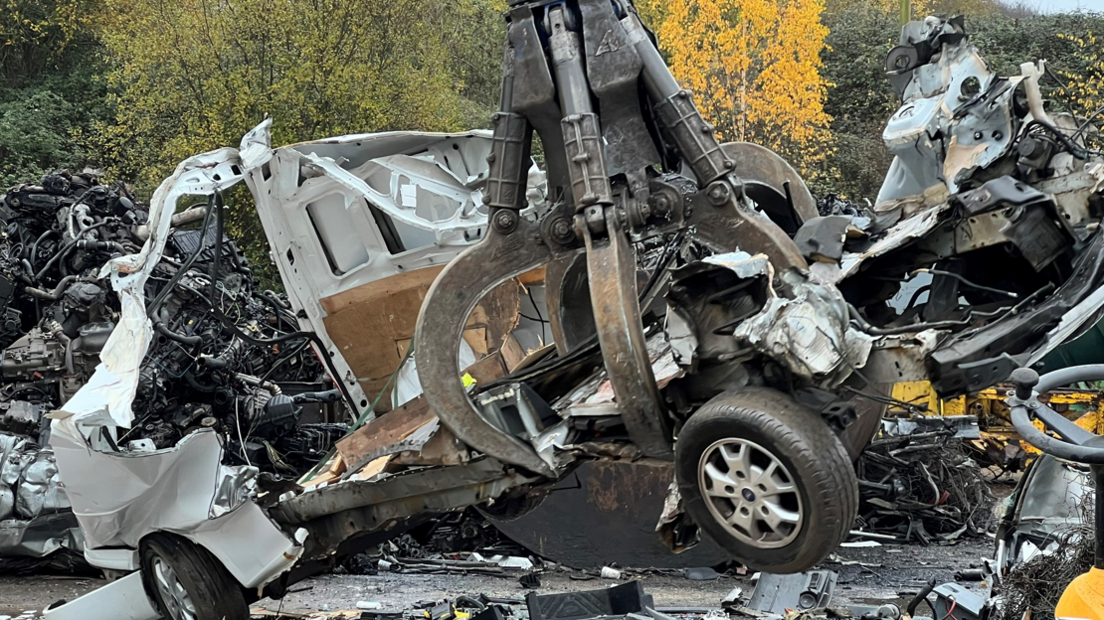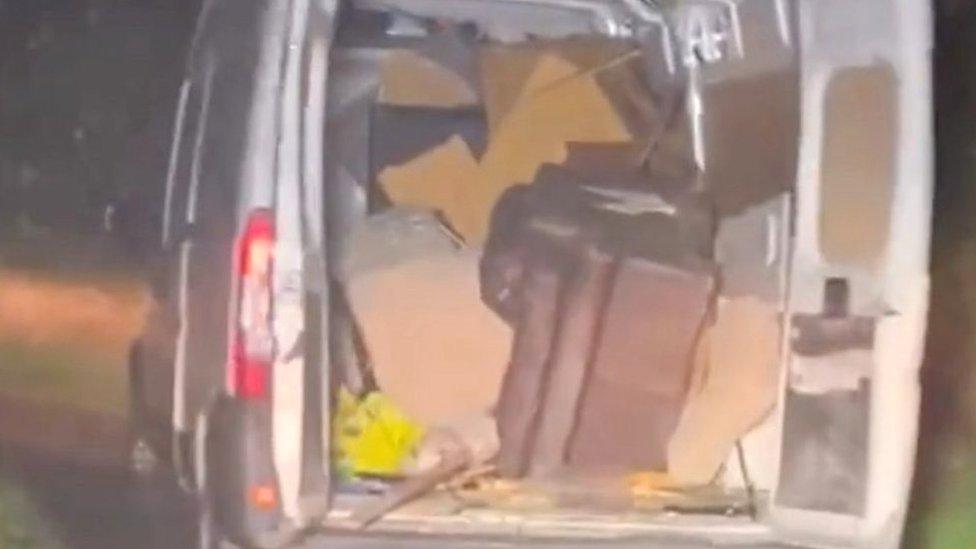Fly-tipping: England sees more than 1m incidents in year
- Published

Rubbish, including ventilation piping, wooden panels and domestic appliances, was found outside Witham Cemetery in Essex in January
There were more than one million fly-tipping incidents in England in 12 months, new figures show.
Those responsible were said to be "spreading misery, blighting our landscape and harming wildlife".
Local authorities dealt with 1.09 million fly-tipping incidents in the year ending March 2022.
Environment Minister Rebecca Pow said it was a "cynical crime" but "solid progress" had been made, with a rise in fixed penalty notices.
Covert cameras, skips in the streets and treating hotspots as mocked-up crime scenes are some of the measures councils are trying to tackle the problem.
Sarah Lee, director of policy and campaigns at the Countryside Alliance, said: "These figures continue to show the shocking level of fly-tipping in this country and the impact that it has on our countryside, villages and towns is abhorrent.
"Fly-tippers, whether they are simply disposing of unwanted household waste or are part of an organised gang are spreading misery, blighting our landscape and harming wildlife."

Waste on farmland in Wiltshire, where the council said it was dealing with some 200 reports per month about fly-tipping
According to the new data, external, published by the Department for Environment Food & Rural Affairs, the 1.09 million figure is down slightly from the 1.14 million incidents reported in 2020/21, but above pre-pandemic levels. In the year ending March 2020, there were 980,000 incidents.
The slight drop was driven by a decrease in the fly-tipping of household waste, from 740,000 to 671,000 incidents. But other categories saw an increase, such as the dumping of commercial waste, which rose from 62,000 to 67,000.
Only 4% of incidents were the size of a tipper lorry load or larger. But those larger examples cost English local authorities £10.7m.
Public health risk
At 32%, almost one third of fly-tipping was the size of a small van load, while just over one quarter was a car boot or less.
The number of enforcement actions, such as warning letters, investigations and fixed penalty notices, rose by 11% to 507,000.
The Local Government Association said fly-tipping was "not only an eyesore for residents, but a serious environmental and public health risk".
Councillor David Renard, environment spokesperson, said: "Councils are working tirelessly to counter the thousands of incidents every year and are determined to crack down on the problem so it is good to see that the number of enforcement actions has increased.
"However, penalties handed down from prosecution fail to match the severity of the offence committed. We continue to urge the government to review sentencing guidelines for fly-tipping so that offenders are given bigger fines for more serious offences to act as a deterrent."
Across England, London had the highest rate of incidents for any region, with 46 per 1,000 people.
The South West had the lowest rate, with nine incidents per 1,000 people.
London was also the only region seeing an increase in the number of recorded incidents.
Your device may not support this visualisation
Mrs Pow added: "Fly-tipping is a cynical crime which blights communities and undermines legitimate waste businesses.
"We are making solid progress - with fly-tipping incidents down 4% and fixed penalty notices up 58% over the past year - but we are determined to do more to tackle this pernicious activity.
"That is why we are awarding councils with grants to tackle fly-tipping, strengthening powers to detect and prosecute waste criminals, and planning to introduce rules to crack down further on these unscrupulous offenders."
- Published1 December 2022

- Published16 September 2022

- Published25 January 2023
